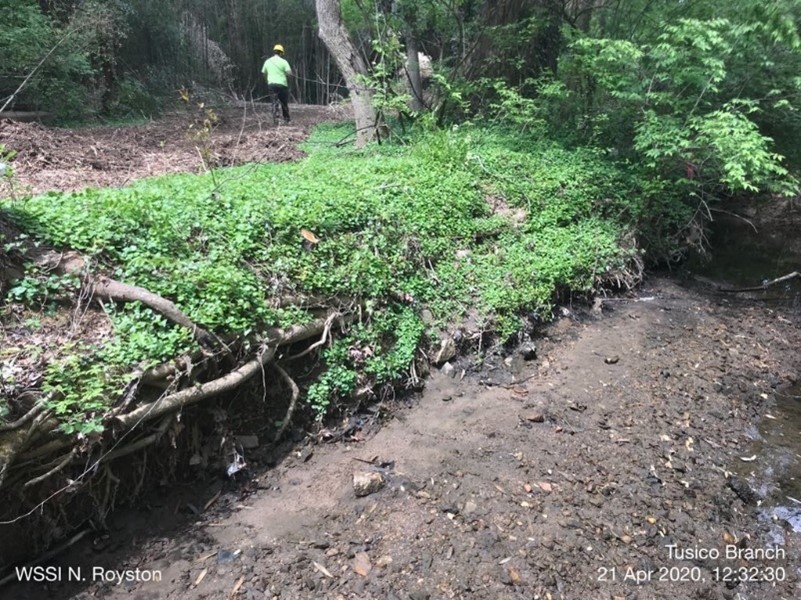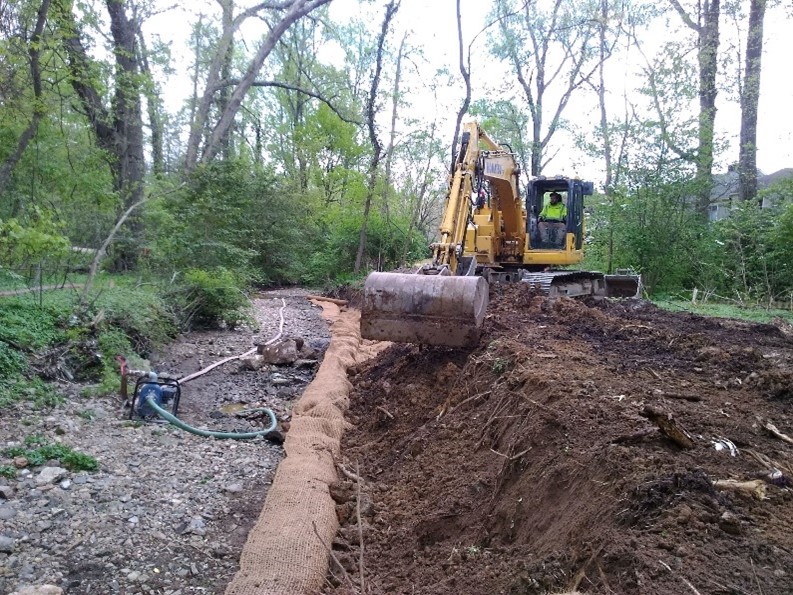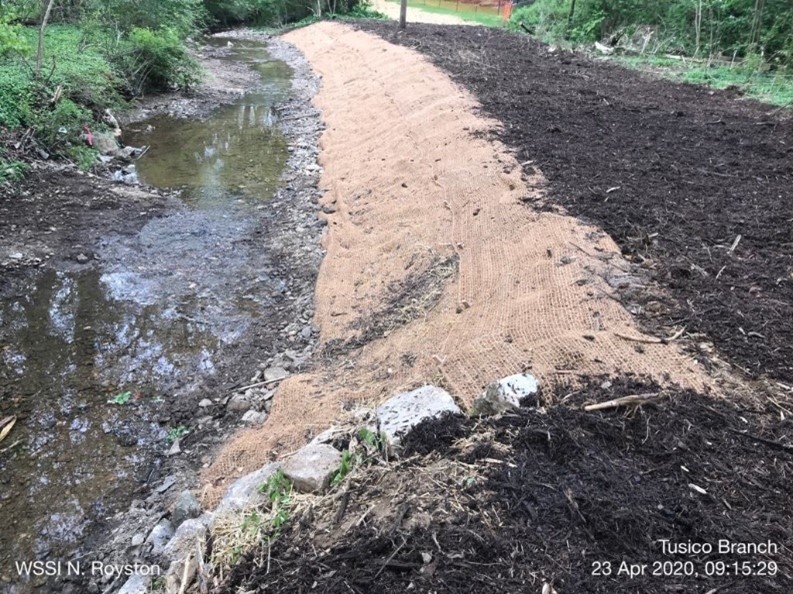We can use photos from Tusico Branch stream restoration project to help illustrate the construction process.


Eroded stream bank, at Tusico Branch Phase 1 project, April 2020
Stream restoration requires the use of heavy equipment and land disturbance. The initial stages of the project are usually the most disruptive. Crews must gain access to the site to install erosion & sediment controls, which is the first step in the project. This often requires creating an access path to and clearing of brush and trees along the perimeter of the project area.
After erosion & sediment controls are installed, crews will begin clearing existing trees and vegetation from the area to be worked. At this stage, the project team will often be able to make adjustments to the tree removal plan in the field to save as many trees as possible. Adjusting access paths and using different types of equipment can save trees.
These first parts of the project will generate noise from excavators, chainsaws, and trucks.


Tree removal complete, stream pump around in place, and reshaping of the stream bank in progress.
After the work area is cleared, crews will begin reshaping the streambanks, installing features like step pools and log sills, and installing stone where needed. Work in the streambed requires the existing stream to be temporarily diverted or pumped around the project area. Crews must be careful not to allow the stream to carry away loose sediment from the construction activities. This part of the project typically generates less noise than the initial stages but still does require the use of excavators and other heavy equipment. Truck traffic will bring materials in and haul debris out of the project area regularly


Continued reshaping of the stream bank and installation of a coir roll (natural fiber roll) on the new bank, and soil stabilization matting.
After the stream has been reshaped and water control features are installed, the next step is stabilization. This is where live stakes, shrubs, trees, and seed mixes are planted. Fiber matting will often be used to help keep small plantings in place until they can establish into the new soils. This is the least disruptive part of the project and much of the landscaping work is done by hand. Depending on the time of year, tree and shrub installation may be postponed for favorable weather in the spring and fall planting seasons.


Streambank immediately after construction has been completed. Topsoil and seed have been placed.
The last step occurs after the site has been stabilized, which can be several weeks after planting. At this stage the crews can remove erosion & sediment controls and pull out of the project area. You may see crews and equipment come back to the site a few more times to make final corrections.


Streambank in July 2020, just 4 months after construction started. Grass has established.
Larger stream restoration projects can involve going through these steps in smaller sections of the project and then moving to the next area. Stream restoration generally starts on the upstream end and works toward the downstream end.
All work is done within the limits of the city’s noise ordinance, though work hours are generally shorter and occur Monday through Friday from 7 a.m. to 4 p.m. Public Works provides specific information about project impacts to nearby residents before work starts. This information is also posted on the project website.
During and right after a stream restoration project, the area will look like a construction site. The project is not yet complete, even though you may not see people working! Planting can take several weeks to establish. The appearance and amount of vegetation will improve substantially by the following growing season. You may see crews come back out to reseed and replace plantings. Once
The site will continue to repair itself over the next several months and after two years it can be difficult to tell that work was done there at all other than by looking for stone structures, log sills, and similar constructed stream features.